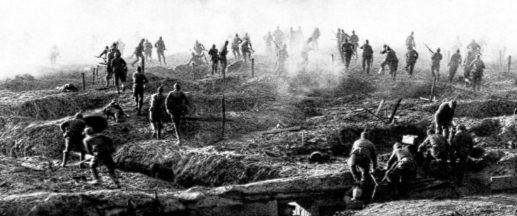Title: World War I: The Great War that Shaped the Modern World
World War I, also known as the Great War, was one of the deadliest conflicts in human history, spanning from 1914 to 1918. It engulfed nations across the globe and reshaped the political, social, and economic landscape of the 20th century. The war, fought primarily in Europe, marked the end of an era of relative peace and stability and set the stage for profound changes that would shape the modern world.
Origins of the War:
The roots of World War I can be traced back to a complex web of alliances, imperial rivalries, and militarism that characterized Europe in the late 19th and early 20th centuries. The assassination of Archduke Franz Ferdinand of Austria-Hungary in Sarajevo in 1914 served as the catalyst for the conflict, triggering a series of diplomatic crises and ultimatums that led to the outbreak of war.
The Alliance System:
The war pitted the Allied Powers, including France, Russia, the United Kingdom, and later the United States, against the Central Powers, primarily Germany, Austria-Hungary, and the Ottoman Empire. The alliance system turned a localized conflict into a global conflagration, as countries across Europe and beyond were drawn into the fray.

Trench Warfare and Stalemate:
The early stages of the war saw rapid movement and large-scale offensives, but soon descended into a brutal stalemate characterized by trench warfare on the Western Front. Soldiers endured unimaginable hardships in the trenches, facing constant shelling, disease, and horrific casualties.
New Technologies and Warfare:
World War I witnessed the introduction of new and devastating technologies of war, including tanks, aircraft, machine guns, and chemical weapons. These innovations transformed the nature of warfare and contributed to the staggering loss of life on all sides.
Global Conflict and Consequences:
While the war was centered in Europe, it had global ramifications. Fighting spread to Africa, the Middle East, and Asia, as colonial empires were drawn into the conflict. Millions of soldiers from around the world fought and died in the service of their respective countries.
End of the War and Treaty of Versailles:
The war finally came to an end in 1918 with the signing of armistice agreements. The Treaty of Versailles, signed in 1919, imposed harsh penalties on Germany, including territorial losses, demilitarization, and reparations payments. The treaty also redrew the map of Europe, creating new nations and sowing the seeds of future conflicts.
Legacy of World War I:
World War I had a profound and lasting impact on the world. It shattered empires, redrew borders, and set the stage for the rise of totalitarian regimes and the outbreak of World War II. The war also catalyzed social and cultural changes, including the women’s suffrage movement, increased political activism, and disillusionment with traditional values.
Conclusion:
World War I was a watershed moment in human history, marking the end of the old world order and the dawn of a new era fraught with uncertainty and upheaval. Its legacy continues to resonate in the geopolitical tensions and conflicts of the modern world, serving as a stark reminder of the cost of war and the importance of international cooperation and diplomacy in preserving peace and stability.

